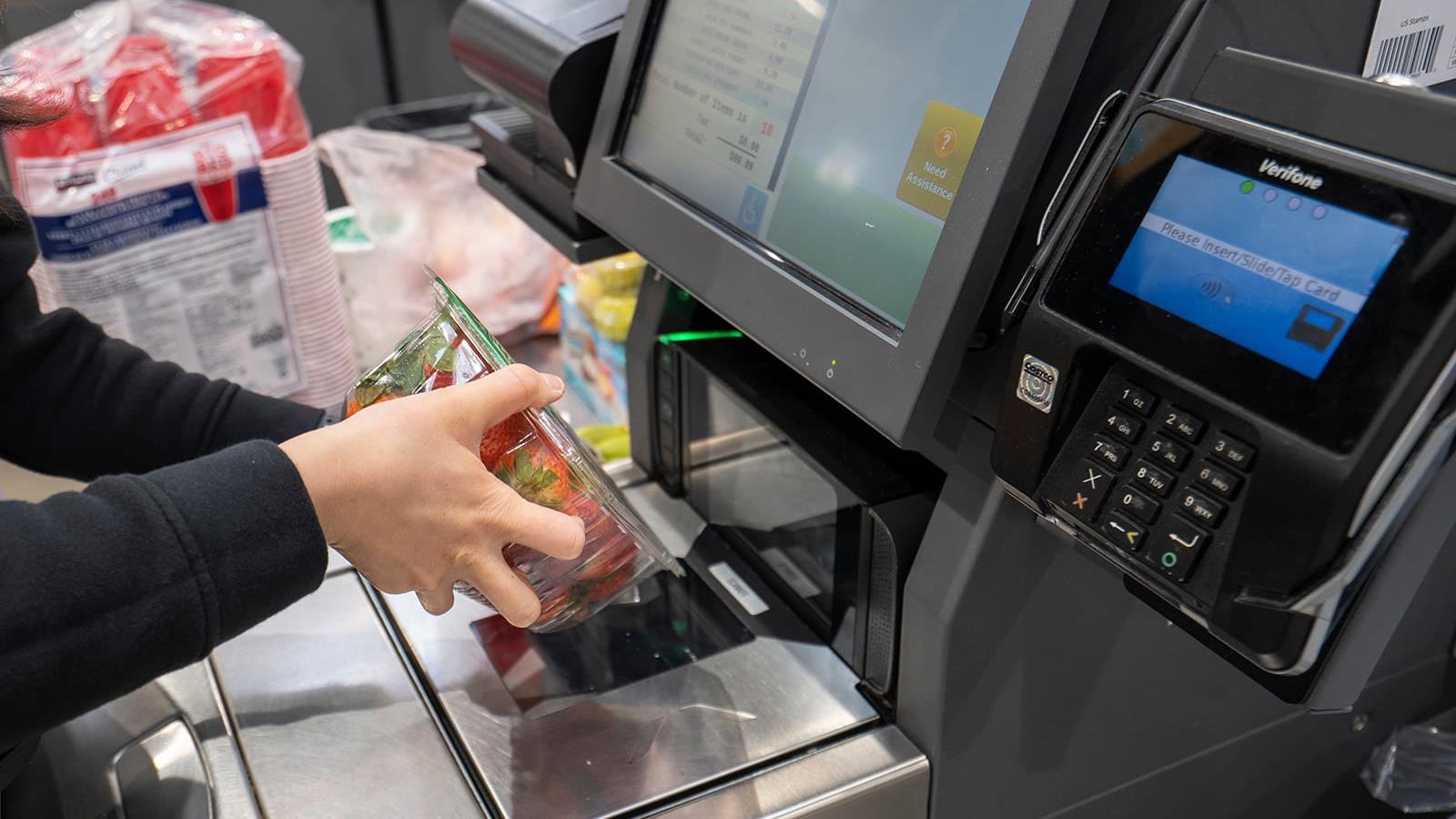Does Self-Checkout Impact Grocery Store Loyalty?
customers who use regular checkout.

- Drexel Selects New, World-Class Life Sciences Building at 3201 Cuthbert Street for Medical Research Operations
- Breakthrough on Gene Therapy for Hereditary Spastic Paraplegia
- Drexel Environmental Collaboratory Releases Cross-Sector Findings on Severe Weather Recovery Challenges
- Drexel Launches the Manuel Stamatakis Center for Alternative Investments at the LeBow College of Business

In an effort to reduce costs and improve customer satisfaction, retailers have implemented self-checkouts in stores across the country. They have become increasingly popular, but some brands like Walmart are removing self-checkouts in some locations while adding more in others. There are many advantages and disadvantages of self-checkout for both the customer and the retailer, but little formal research has investigated the impact of self-checkout on customers’ shopping experience. This led researchers from Drexel University’s LeBow College of Business to look at how self-checkout systems in grocery stores influence customer loyalty compared to regular checkout systems.
Yanliu Huang, PhD, a professor in LeBow, and a former Drexel graduate student, Farhana Nusrat, PhD, now an assistant professor at the University of San Diego, conducted five studies that showed customers are more likely to remain loyal to the grocery store when using regular checkout service. They found loyalty is demonstrated by an increased likelihood of returning to the store in the future. These findings and the full study were recently published in the Journal of Business Research.
Huang and Nusrat established that the perceived ease of checkout and a sense of entitlement played a role in explaining the effect of loyalty. They also noted the number of items purchased during the shopping trip also affects how the type of checkout influences customer loyalty.
“Our findings indicate that self-checkout systems, despite their advantages in terms of speed, ease of use, and cost reduction, can result in lower customer loyalty compared to regular checkout systems, especially when the number of purchased items is relatively high (e.g., more than 15 items),” said Huang.
Specifically, they noted that the perceived saved effort during the checkout process and the customers’ sense of entitlement explain the effect of checkout type on customer loyalty. Extra effort required to checkout and bag purchases and the expectation of being served by the store were negative consequences of self-checkout and decreased loyalty to the store. But, when shoppers viewed the extra effort in self-checkout as a rewarding experience, their store loyalty matched that of regular checkout shoppers.
Huang and Nusrat’s research is a compilation of five studies of data collection through crowdsourcing platforms. In the first study, they surveyed people who reported grocery shopping within the last seven days about their most recent grocery shopping trip and were asked to indicate which checkout method they used, followed by customer loyalty questions. This study demonstrated that regular checkout customers reported higher loyalty to the store than self-checkout customers.
In the second, third and fourth studies, Huang and Nusrat used hypothetical scenarios to have participants imagine that they took a grocery shopping trip to a supermarket and made purchases. In the regular checkout condition, participants were told that a cashier helped them at the checkout counter with the scanning and bagging process. In the self-checkout condition, participants were told that they scanned and bagged all items themselves at checkout. Then participants were shown a screen displaying the price of some items and the savings made.
In all five studies loyalty to the grocery store was measured, as well as perceived saved effort during the checkout process and customer entitlement in the third study. Results from the third study showed that customers’ perceived saved effort during the checkout process and their sense of entitlement, explain the effects of the checkout system on customer loyalty to the store. While the fourth study demonstrated that the effect of checkout type on customer loyalty will most likely happen for a high basket size, when the number of items purchased during a shopping trip is greater than 15.
In the fifth study – a field study – Huang and Nusrat introduced an intervention by encouraging participants to associate the extra effort involved in self-checkout with rewards. Specifically, in the first stage, participants who indicated that they would visit a supermarket to grocery shop within the next five days took part in the study and were randomly assigned to read either a neutral passage about trees or a passage about how self-completing a task that requires effort can make them feel accomplished and rewarded. The purpose of this intervention was to influence participants’ perception of self-checkout, making them think of the extra effort involved in self-checkout as rewarding and satisfactory. Participants were then asked to go grocery shopping within the next five days, upload the receipt of that shopping trip, indicate which checkout method they used, and answer store loyalty questions.
“We found that when customers were encouraged to think of the extra effort involved in self-checkout as a rewarding experience, their perceived loyalty to the store was similar to those of regular checkout shoppers,” said Huang.
Haung and Nusrat noted this research can help inform retailers on whether they should install or remove self-checkout systems, and how to better manage the self-checkout systems to ensure positive customer experiences.
“For example, to overcome the negative impacts of using self-checkout on customer loyalty, retailers should attempt to make the self-checkout experience more rewarding, like encouraging shoppers to think the extra effort involved in self-checkout is a rewarding experience,” said Huang. “Doing so offers retailers a solution to improve their self-checkout customers’ overall shopping experience, which in turn will facilitate higher customer loyalty.”
The researchers added that there is opportunity for similar studies to broaden the focus on other retail settings, including clothing, home improvement and luxury stores, as well as other forms of self-service technologies, such as self-checkout with RFID, scan-and-go apps, smart carts and self-service kiosks to measure customers’ experience.
Drexel News is produced by
University Marketing and Communications.